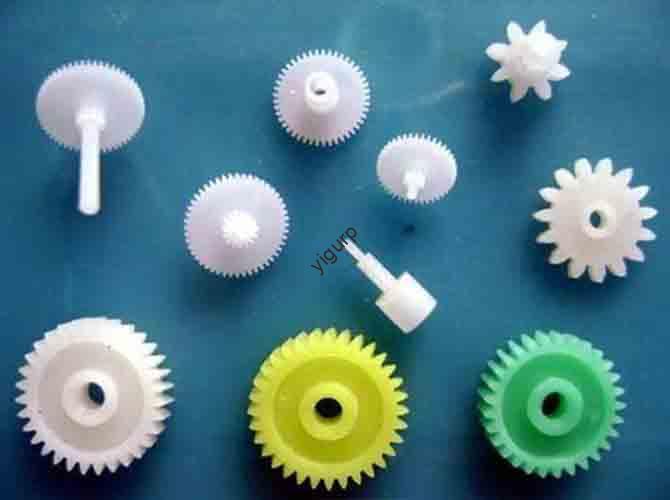В сегодняшнем быстро развивающемся производственном мире, businesses and engineers constantly seek technologies that cut costs, boost flexibility, and enable innovation. One solution that has risen to prominence? 3D additive printing (также называется 3D Печать или аддитивное производство, ЯВЛЯЮСЬ). But what exactly is it, Как это работает, and can it solve your production challenges? Это руководство разбивает все, что вам нужно знать.
1. What Is 3D Additive Printing? Определение & Основные принципы
В его сердце, 3D additive printing is a digital manufacturing process that builds three-dimensional objects by adding material layer by layer—unlike traditional “subtractive” methods (НАПРИМЕР., Обработка с ЧПУ) that carve or cut material from a solid block.
Key Principles of 3D Additive Printing
- Digitized Foundation: It starts with a 3D model created using CAD (Компьютерный дизайн) or CAM (Компьютерное производство) программное обеспечение. This file acts as a “blueprint” for every layer.
- Слой по сложному строительству: The printer reads the CAD file, splits it into thousands of thin 2D layers, and deposits or fuses material (НАПРИМЕР., пластик, металл, смола) one layer at a time—stacking them vertically to form the final object.
- No Molds Required: В отличие от литья или литья, there’s no need for expensive, time-consuming molds—making it ideal for rapid prototyping and small-batch runs.
2. 3D Additive Printing Technologies: Типы & Их приложения
Not all 3D printing technologies are the same. They vary by energy source, материал, and molding method. Below is a breakdown of the most common types and where they excel:
| Название технологии | Energy Source | Общие материалы | Ключевые приложения | Преимущества |
| Стереолитмикромография (СЛА) | Ультрафиолетовый лазер | Фотополимерная смола | Прототипы, стоматологические модели, ювелирные изделия | Высокие детали (0.1mm accuracy), плавные поверхности |
| Селективное лазерное плавление (СЛМ) | Fiber Laser | Металлические порошки (сталь, алюминий) | Аэрокосмические части, Медицинские имплантаты | Сильный, durable metal components |
| Электронный пучок таяния (EBM) | Electron Beam | Титан, cobalt-chrome | Ортопедические имплантаты, аэрокосмические сооружения | High-temperature processing, Минимальные отходы |
Реальные варианты использования
- Аэрокосмическая: Boeing uses SLM to print lightweight turbine parts, reducing fuel consumption by 15%.
- Медицинский: Hospitals create custom 3D-printed prosthetics (НАПРИМЕР., hand implants) that fit patients perfectly—cutting wait times from months to weeks.
- Автомобиль: Tesla uses 3D printing to prototype battery housings, slashing development time by 40%.
3. Преимущества против. Проблемы: Can 3D Additive Printing Solve Your Problems?
To decide if 3D additive printing is right for you, let’s weigh its strengths against its current limitations:
Преимущества (How It Solves Key Pain Points)
- Complexity Without Extra Cost: Print intricate designs (НАПРИМЕР., решетчатые структуры, внутренние каналы) that are impossible with subtractive methods—no additional labor or tools needed.
- Высокое использование материала: До 95% of material is used (против. 50-70% in CNC machining), сокращение отходов и снижение затрат на материал.
- Personalization at Scale: Create custom products (НАПРИМЕР., персонализированные медицинские устройства, branded promotional items) without slowing down production.
- Быстрое прототипирование: Turn a CAD design into a physical prototype in hours (не недели), Ускорение циклов разработки продуктов.
Проблемы (What to Consider)
- Скорость печати: Large or thick parts can take hours or days to print—still slower than mass-production methods like injection molding.
- Материальные ограничения: Некоторые материалы (НАПРИМЕР., Высокотемпературные пластмассы, certain metals) are expensive or lack the strength needed for heavy-industry use.
- Cost-Benefit Balance: Для масштабного производства (10,000+ единицы), traditional methods are still cheaper. 3D printing shines most for small batches or prototypes.
4. Будущие тенденции: Where Is 3D Additive Printing Headed?
Как технологии достигают, these challenges are being addressed. Here’s what to expect in the next 3-5 годы:
- Faster Printing: Новые технологии (НАПРИМЕР., переплет) are doubling print speeds, making 3D printing viable for more mid-volume applications.
- Wider Material Range: Companies are developing affordable, high-performance materials—including recycled plastics and bio-based resins.
- Finer Accuracy: Printers with 0.05mm resolution will become more accessible, opening doors for micro-manufacturing (НАПРИМЕР., tiny medical sensors).
- Cross-Industry Expansion: Expect growth in fields like construction (3D-printed homes) and food (custom-shaped snacks or nutrient-specific meals).
5. Yigu Technology’s Perspective on 3D Additive Printing
В Yigu Technology, Мы видим 3D additive printing Как краеугольный камень умного производства. It aligns with our mission to help clients reduce waste, speed up innovation, and adapt to changing market demands. We’ve supported aerospace and medical clients in adopting SLM and SLA technologies—for example, helping a dental lab cut prosthetic production time by 50%. While challenges like speed remain, we’re investing in software integrations (НАПРИМЕР., CAD-to-printer workflow tools) to make 3D printing more efficient. For businesses ready to move beyond traditional manufacturing, 3D additive printing isn’t just a trend—it’s a strategic tool.
Часто задаваемые вопросы: Your Top 3D Additive Printing Questions Answered
- Q.: Is 3D additive printing suitable for mass production?
А: В настоящее время, no—for batches of 10,000+ единицы, традиционные методы (НАПРИМЕР., Инъекционное формование) are cheaper and faster. But it’s ideal for small batches (1-1,000 единицы) and personalized products.
- Q.: What materials can I use for 3D additive printing?
А: Common options include plastics (Плата, АБС), металлы (алюминий, титан), смолы, and even specialty materials like carbon fiber or ceramic. The choice depends on your application (НАПРИМЕР., смола для деталей, metal for strength).
- Q.: How much does a 3D additive printer cost?
А: Entry-level desktop printers start at \(200-\)500 (for hobbyists), while industrial-grade printers (НАПРИМЕР., SLM for metal) варьируется от \(50,000 к \)1 миллион. The cost also includes materials and software.
